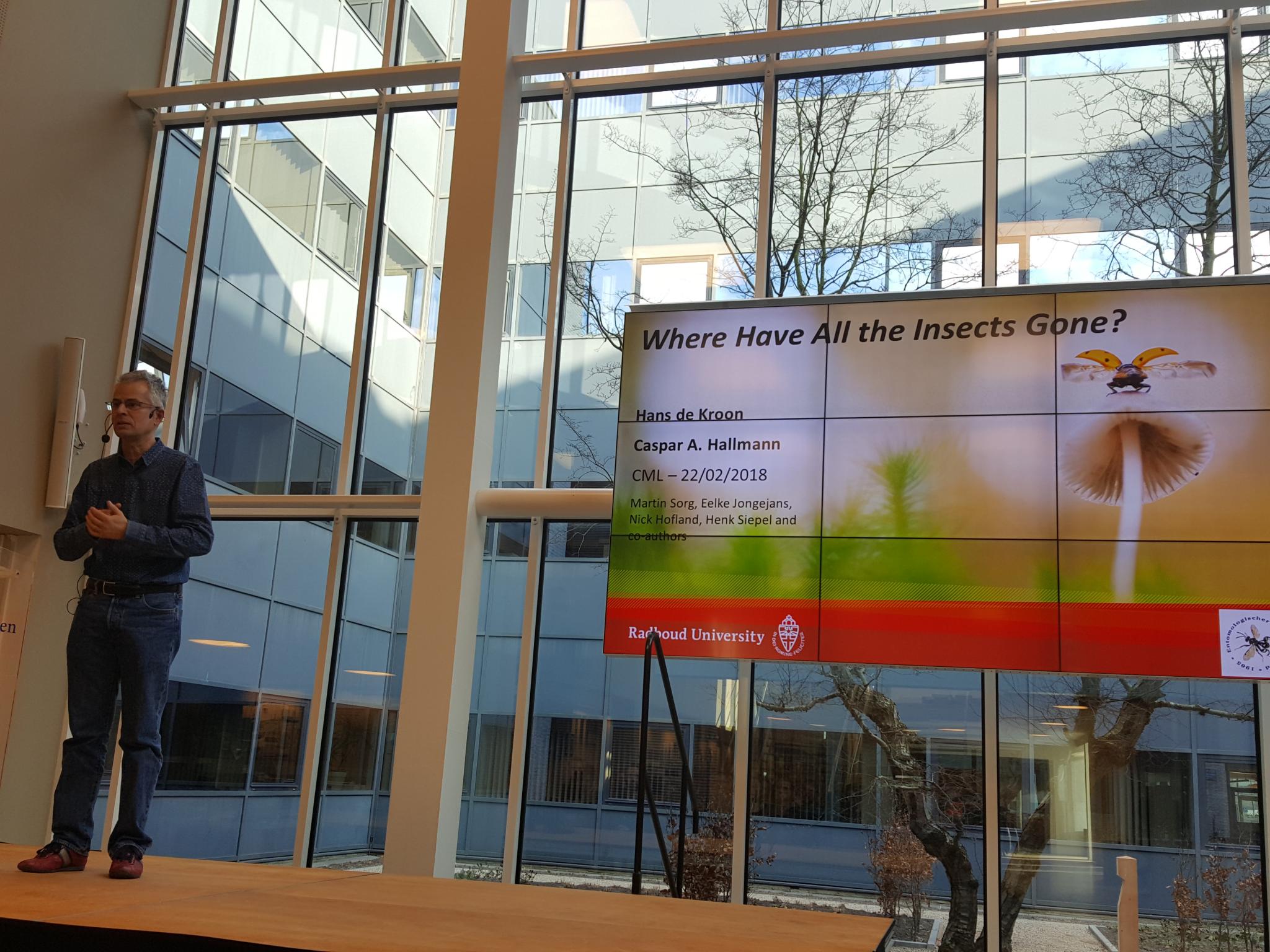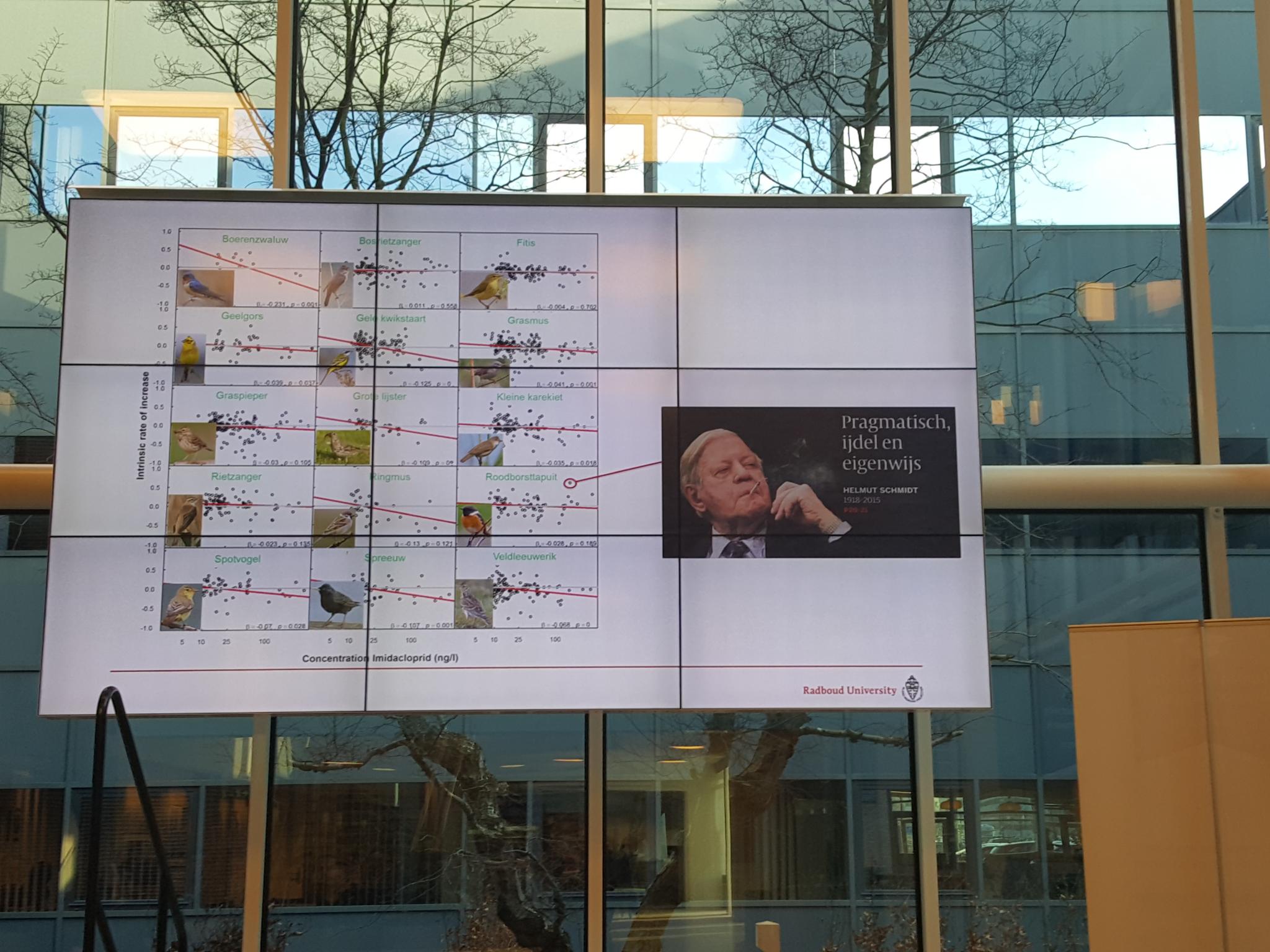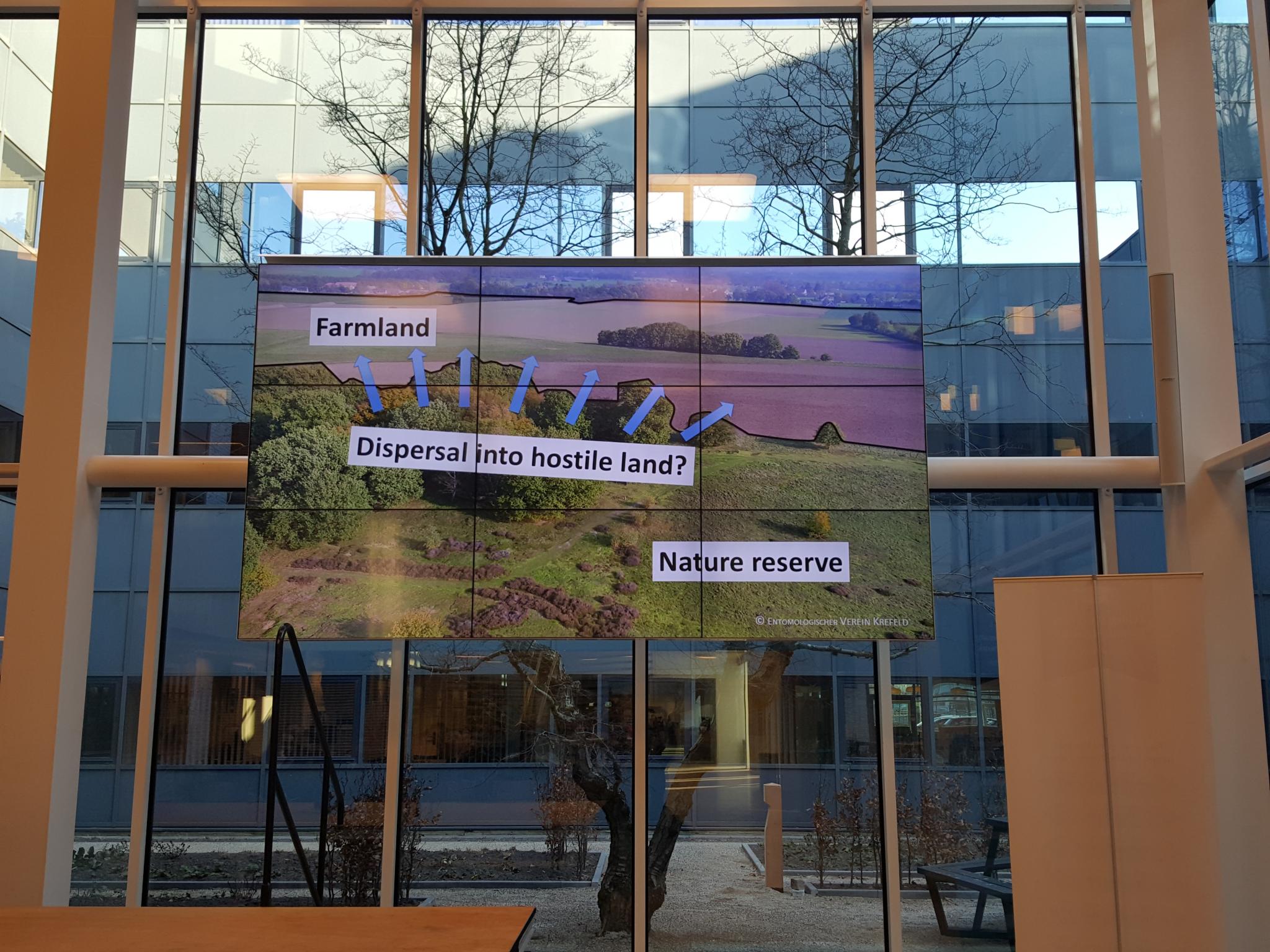Where have all the insects gone? What we learnt from the lecture “Insect Decline Apocalypse”.
In October 2017, a research group led by prof. Dr. De Kroon (Radboud University Nijmegen) shocked the world with their article: “More than 75 percent decline over 27 years in total flying insect biomass in protected areas”. When a few researchers from the Institute for Environmental Sciences in Leiden (CML) decided to organise a lecture series Ecology - Energy - Environment, there was no better topic to start with than the decline in insect biomass. In this first lecture, we learnt from De Kroon where all the insects have gone and why science is important for global change.
By Fenna Plaisier

Remember, science matters! Research can make a change: this really changed public opinion. - Hans de Kroon
Bird population is declining
To understand the study about declining insects, De Kroon started by telling us about an earlier study on bird decline and pesticides. In an article published in Nature in 2014, it was shown that bird population trends in the Netherlands were significantly more negative in areas with higher surface water concentrations of imidacloprid: the common neonicotinoid pesticide. Mostly the insectivorous birds were showing decreasing populations. The article argued that these results suggested that the depletion of insect food resources had caused the the decline.
However, a correlation between diminishing bird population and neonicotinoid pesticide is not the same as a causal link, as well-known science journalist Karel Knip pointed out. In an article in the NRC Handelsblad, he argued that the research had weaknesses. The biggest problem was that the researchers had not looked into shrinking insect populations and that there was no proof of insect population decline yet. Also, it did not correspond with his own observations: in his backyard there were no signs of bird decline whatsoever.
The Helmut Schmitz problem
‘Our story did not correspond with what he saw and this is the problem with stats and data. It can show you trends and possible relations, but if doesn't match your own story, it is hard to believe.’ De Kroon showed a picture of a smoking Helmut Schmidt. ‘It is the Helmut Schmidt story: Helmut Schmidt smoked like a chimney and died at the age 96. Although there had already been a clear relation between smoking and lung cancer for a long time, this did not match people's perception of people they knew who smoked without dying. So in statistics you always have the expectations - the Helmut Schmitz.’ Also our data showed these exceptions (image 2).
Our story did not correspond with what he saw and this is the problem with stats and data. It can show you trends and possible relations, but if doesn't match your own story, it is hard to believe.

The research into insect declines
German researchers to the rescue
Nonetheless, according to De Kroon it was correct that there was more need for evidence concerning the decline in insect numbers. But how to measure this decades in retrospect? Luckily there was a group of German entomologists (insect researchers) in Krefeld. This group, led by biologist Martin Sorg and retired chemist Heinz Schwan, collected data over the past 27 years in 63 different places within nature reserves across Germany. De Kroon joked that it could only have been Germans who would have collected and monitored data in such a meticulous way!
Part of the explanation for the reduced insect biomass could therefore be that the protected areas (serving as insect sources) are affected and drained by the agricultural fields in the broader surroundings (serving as sinks or even as ecological traps).
With so-called “malaise traps” the entomologists trapped the insects and weighed the collected biomass. This data was collected and compared over time, which showed a clear decline in insect biomass. They labeled each sample to compare the data. In this way, they were able to research the circumstances of the sample: season, rainfall, temperature, landscape configurations, changes in plant species, habitat types etc. Even changes in these circumstances (like higher temperatures, more rainfall etc.), could not explain the 76 percent decline. They concluded that “the reserves in which the traps were placed are of limited size in this typical fragmented West-European landscape, and almost all locations (94%) are enclosed by agricultural fields. Part of the explanation for the reduced insect biomass could therefore be that the protected areas (serving as insect sources) are affected and drained by the agricultural fields in the broader surroundings (serving as sinks or even as ecological traps).”
(http://journals.plos.org/plosone/article?id=10.1371/journal.pone.0185809)

Matching stories and Hooray for open source!
Did they expect all this media attention on their study? De Kroon told the audience that they were totally surprised by this. ‘Although we were surprised by the results ourselves, we didn’t expect it to go viral.’
‘Remember, science matters! Research can make a change: this really changed public opinion.’ It was this research which led to the “Declaration of Driebergen”: where parties from the agriculture, horticulture and retail sector, environmental organisations, scientists and others involved in biodiversity signed the declaration in which they promised to come up with a Delta Plan Biodiversity.
‘Hooray for open source!’ De Kroon emphasised, ‘because suddenly our story did match the story of the people. We got emails from people telling us that this is exactly what they have been experiencing. Like the ‘windscreen phenomenon’: the fact that their cars were no longer covered in dead insects.’
Nonetheless, the research showed an alarming decline of insects. How much evidence do you really need to make a change that helps our ecosystem?
How much evidence do you need?
There is a necessity for more research to understand the exact causes of declining insect populations. Nonetheless, the research showed an alarming decline of insects. How much evidence do you really need to make a change that helps our ecosystem? Why not reduce practises that are harming insects such as: monoculture, use of pesticides, no room for flowers and plants in verges and field margins?
Next lecture: Cities in a low carbon world | Kennedy | 29 March
Do you want to join the Triple E lecture series? Then register (for free): 3E-lectures.org
About the next lecture:
The daily consumption of goods and services is supported by the uninterrupted and ever-increasing stream of energy and material flows through our cities. These flows ensure that individual needs and desires are satisfied, but there is an environmental cost. There is a call for a major change in our relationship with resources and energy; a change that will affect the way we consume, manage and recover resources in urban areas. In this lecture Prof. Christopher Kennedy will guide us through the future of our "Cities in a low carbon world".
Dr. Christopher Kennedy is a Professor and Chair at the Department of Civil Engineering at the University of Victoria. His work focuses on the application of Industrial Ecology to challenges of sustainable development of cities and global infrastructure systems. He has served as policy advisory for governments and international organisations, and he is a Senior Fellow at the Global Cities Institute and author of The Evolution of Great World Cities: Urban Wealth and Economic Growth.
